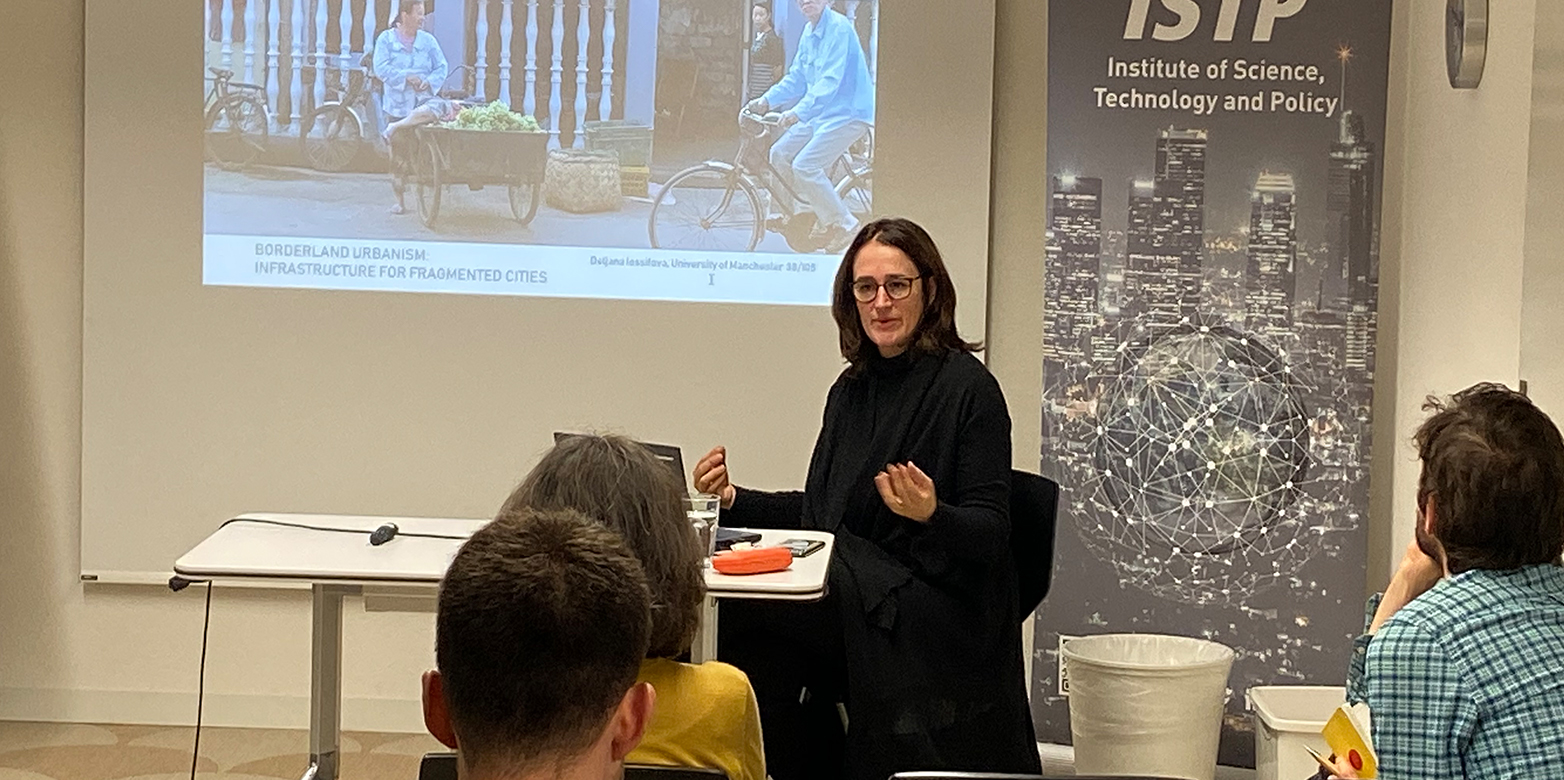Borderland Urbanism: Infrastructure for Fragmented Cities
Dr. Iossifova presented a new research program on the infrastructure for fragmented(ing) cities. This Colloquium's focus was Shanghai – Borderland formation, urban sanitation transitions and related policy challenges in a rapidly evolving socio-eco-technical system. Dr. Iossifova is senior lecturer in Urban Studies and director of the Confucius Institute at the University of Manchester.
by Johann S. Schuur

The presentation guides us through the effects of rapid urban developments in the early years of the 21st century, leading to fragmentation and struggles with urban sanitation in Shanghai. Iossifova documented the transformations extensively by frequenting border regions and connecting with the community. Doing so, she and her team were able to define a variety of rhythms and patterns concerning lifestyle, street vending, sanitation, and key interactions/players between the new and old residents.
The fragmented city of Shanghai
Large scale construction projects aimed at housing the new urban middle class resulted in the resettlement of some 448,000 households within half a decade. New high-rise compounds, numerous construction sites, and walls lead to the formation of undefined social, spatial, temporal, cultural and economic spaces in between the new and old city – termed Borderland. Here, rural migrants formed new homes and practices, some tracing out just enough space to situate a bunkbed shared by sleepers in shifts. Interactions between the remaining old and new habitants were supported by an elaborate network of Borderland middlemen. Extensive networks of "early warning systems" allowed people to go about their business despite authorities guarding the perimeters, who deemed street vending to be illegal.
In the buildup to the Beijing 2008 Summer Olympics and the Expo 2010 Shanghai, the socio-ecotechnical system rapidly shifted. Campaigns by the Chinese government - “Better City, Better Life”- targeted public defecating, public manners and visual attractiveness of the city to adhere to the novel norms of order and hygiene. The new normal would influence the current paradigm such that the system in place would largely be frowned upon by the younger generations.
Micro-gentrification pushed out former residents that made a living out of their homes, "pretend" storefronts were built to make the streets more attractive and those that did not comply would be fenced in to prevent their activities from spilling out onto the street. Only those that had good connections with the local government would have a fair chance to stay put. Notwithstanding the attempts, visits to the local market nearly tripled and the system of fences slowly fell apart as a result of bad governance and non-compliance.
A toilet revolution
As part of the new standard since the 1960s, sanitation had been dealt with through centralized collection stations. The closed-loop system where the content of night pots would be collected, shipped to the country side and used as fertilizers to grow crops was now disintegrating, requiring chemical fertilizers and waste and pollution management. The stigma attached to old practices made flush toilets the new norm, but a supporting infrastructure was not in place. Existing value systems led not only to health and economic local problems, but drove entire generations apart. In 2015, Xi Jinping recognized the need for a "toilet revolution". A strong campaign became an obsession – design competitions, sophisticated full-treatment toilet seats, monitoring supplies by face recognition, and cleaning services were all part of it.
Complex urban
The team on Iossifova’s projects include experts that span the realm of public policy, architecture and planning, urban theory, computational thinking, complex (multi-agent) systems and networks, simulation, geospatial sciences, sustainability, ecological economy, mathematical biology, collective behavior, transport systems and optimization, and spatial statistical analysis. The strong basis ensures the team to reach beyond agent based modeling. They combine both qualitative and quantitative data within a social sciences context. With their efforts, they hope to guide decision makers that are increasingly interested in different approaches to new sanitation practices.To effectively support the diversity in cultural, educational and value systems in Shanghai, a city of 24 million people to date, crucial roles are assigned to architects and policy makers.
The Institute of Science, Technology and Policy, would like to thank Dr. Iossifova and her team for shedding light on the multitude of challenges that fragmented cities face. Her research proves a valuable tool in framing policy problems and we therefore look forward to welcoming her back.
To get a broadened sense of the ISTP and our topics of interest and past seminars visit our Colloquium page